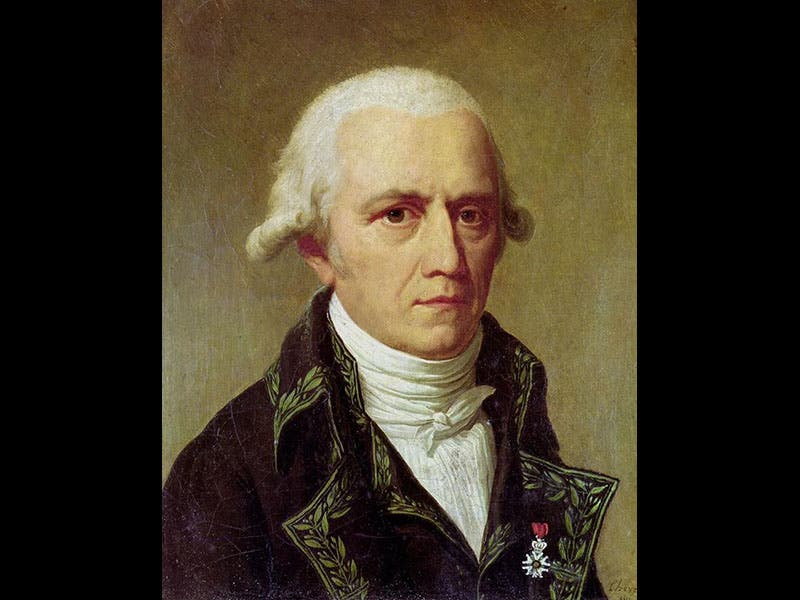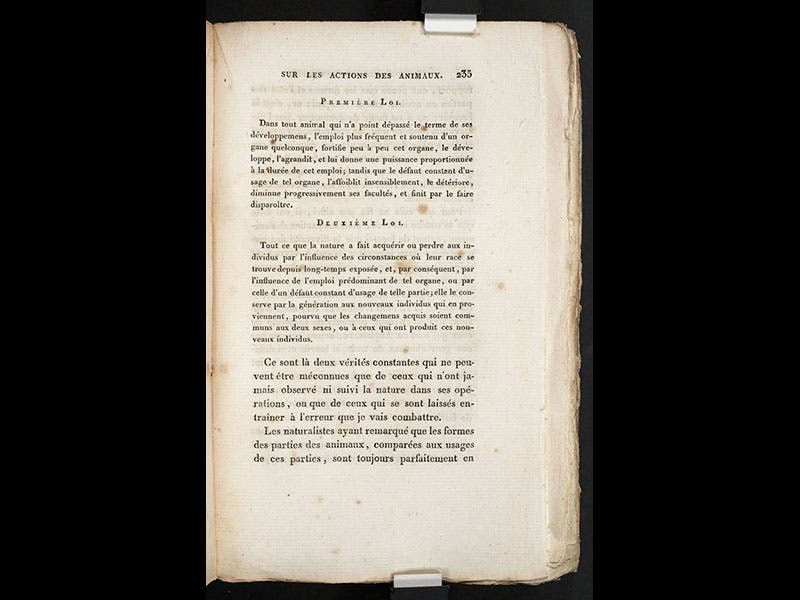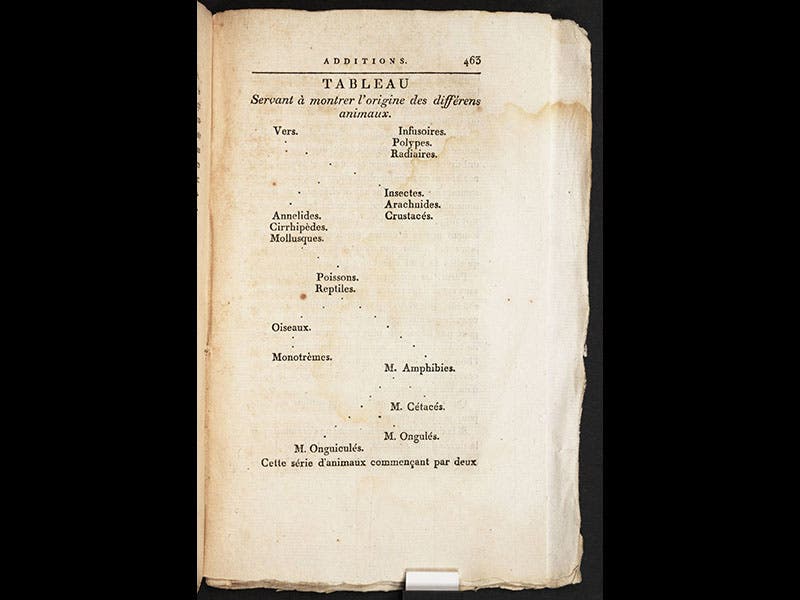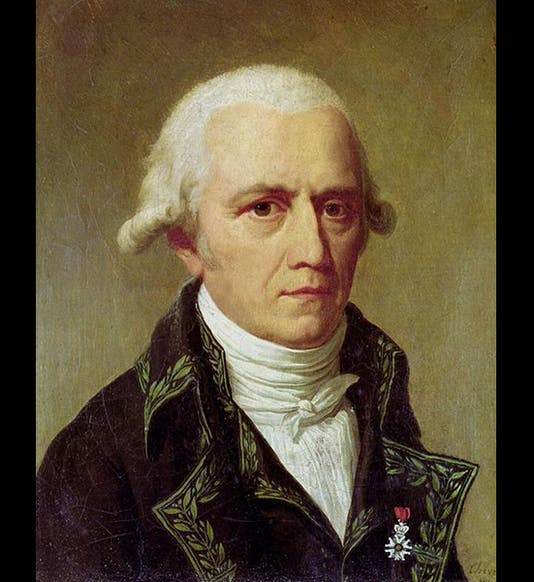Scientist of the Day - Jean-Baptiste Lamarck




Jean-Baptiste Lamarck, a French botanist and invertebrate zoologist, was born Aug. 1, 1744. Lamarck is a favorite counter-example to the claim that scientists do their best work by the age of 30. Lamarck got the opportunity to found the discipline of invertebrate zoology at the age of 50, when he was appointed professor of that field at the recently-founded Museum of Natural History in Paris. He soon determined that Linnaeus's division of the invertebrates into only two classes was misguided, and he greatly expanded the number of classes, inventing such new taxa as crustaceans and mollusks. He announced his reordering of the invertebrates in his Histoire naturelle des animaux sans vertebres (1801). He was 57 years old; his portrait was painted about the same time (first image).
Eight years later, when he was 65, Lamarck published his two-volume Philosophie zoologique (1809; second image), in which he made a case for the transmutation of species, or evolution, as we now call it. He set down two laws of nature that Lamarck thought made evolution inevitable, and, unusually, both laws fit onto one page of his 1809 book (third image). The first law observes that the strength and size of an animal's organs change over the course of its lifetime, as it uses or does not use those organs, and the second law proposes that such modifications are passed on to the next generation. His conclusion was that species should be modified by the inheritance of acquired characters. He even included a diagram at the end of his book to suggest how the evolutionary process had worked itself out (fourth image). Lamarck was the first evolutionist to provide a possible mechanism for evolution, and even though it turns out that acquired characters are not inherited, Lamarck has usually been admired as an important precursor to Charles Darwin.
We have copies of both the Histoire...sans vertebres and the Philosophie zoologique in our History of Science Collection. The Zoological Philosophy is an especially fine copy, since it is uncut, in its original wrappers, just as it came from the printers. We displayed it in our 2009 exhibition, The Grandeur of Life. When HMS Beagle embarked on its famous voyage in 1831, the on-board library available to Darwin included a second edition of the Histoire...sans vertebres (an edition we also have in our collections). The Beagle library did not contain Lamarck’s Philosophie zoologique.
Dr. William B. Ashworth, Jr., Consultant for the History of Science, Linda Hall Library and Associate Professor, Department of History, University of Missouri-Kansas City. Comments or corrections are welcome; please direct to ashworthw@umkc.edu.






